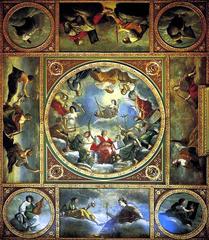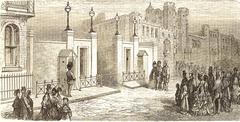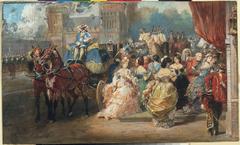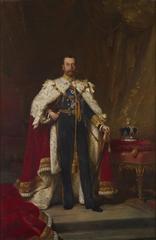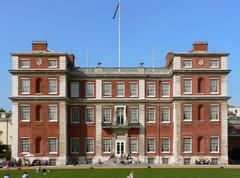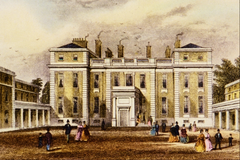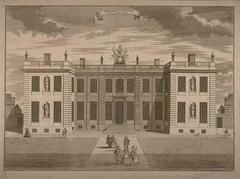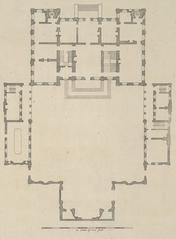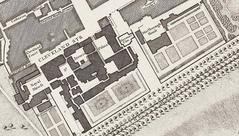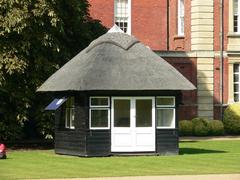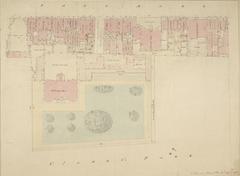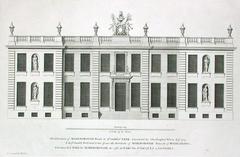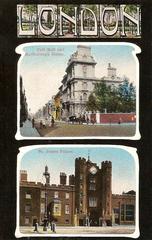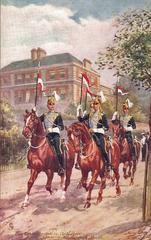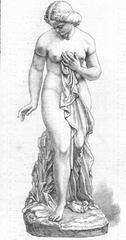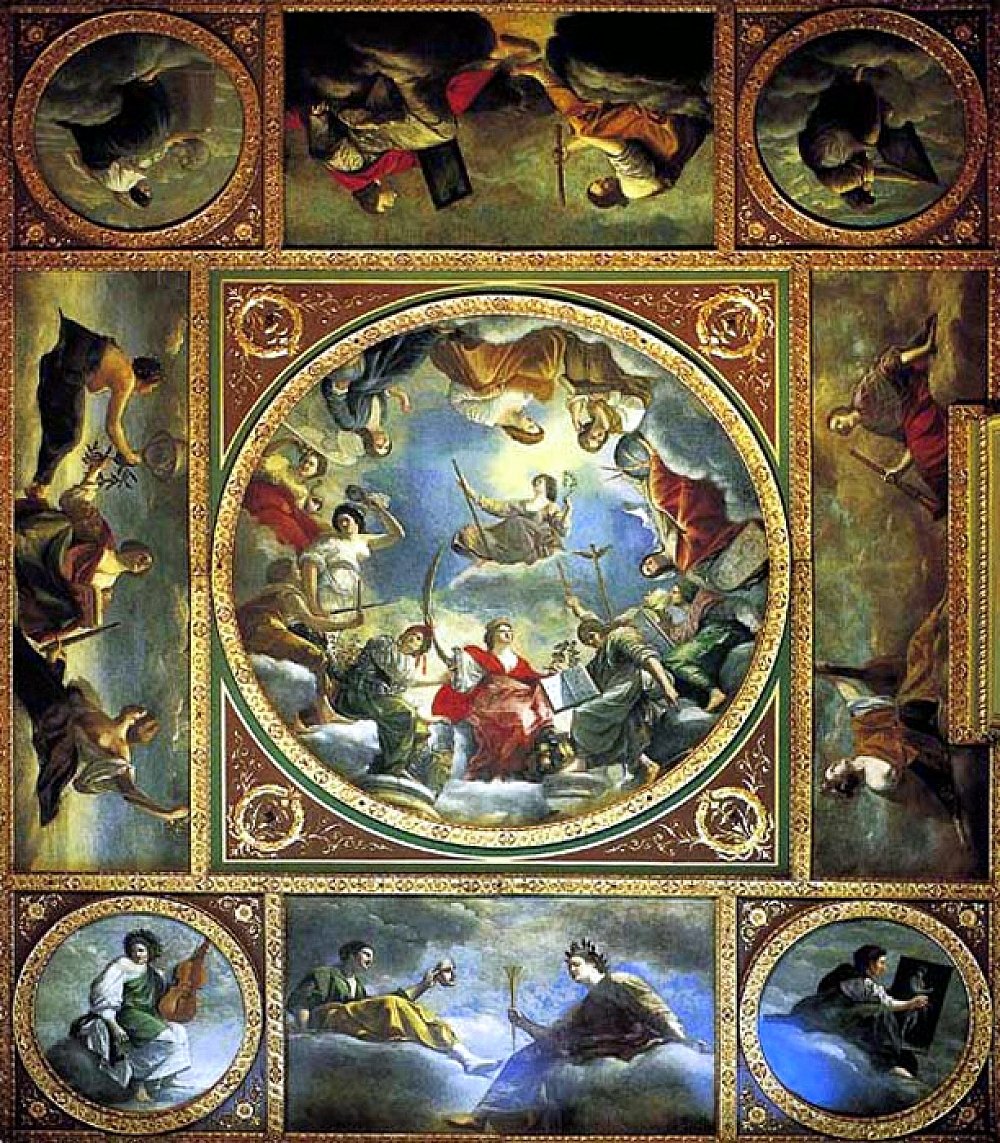
Marlborough House London: Visiting Hours, Tickets, and Historical Sites Guide
Date: 14/06/2025
Introduction to Marlborough House: History and Cultural Significance
Nestled in the prestigious St James’s district of London, Marlborough House stands as a distinguished symbol of British royal heritage and modern diplomacy. Commissioned in the early 18th century by Sarah Churchill, Duchess of Marlborough, and designed by Sir Christopher Wren, this Grade I listed mansion has played a vital role in British aristocratic life, royal history, and, more recently, international relations. Today, it is the headquarters of the Commonwealth Secretariat, underscoring the UK’s enduring ties with the Commonwealth of Nations and its evolving global identity.
With its restrained Baroque architecture and richly decorated interiors, Marlborough House appeals to history enthusiasts, architecture buffs, and cultural explorers alike. Although public access is limited, its proximity to Buckingham Palace, St James’s Palace, and The Mall makes it a prominent stop for those tracing London’s royal and diplomatic legacy. This guide provides an in-depth look at the house’s origins, architectural evolution, prominent residents, and current function, along with practical information for prospective visitors: visiting hours, ticketing, accessibility, and nearby attractions. Whether you are planning a visit during Open House London or seeking historical insight, this resource ensures a detailed and rewarding experience. (Victorian Era; The DiCamillo Companion; Unofficial Royalty; Commonwealth Secretariat)
Table of Contents
- Introduction and Overview
- Origins and Early Construction
- Architectural Evolution and Features
- Notable Residents
- Marlborough House’s Historical Role
- Modern Era and Commonwealth Functions
- Visiting Marlborough House
- Preservation and Conservation
- Frequently Asked Questions (FAQ)
- Conclusion
- References and Further Resources
Origins and Early Construction
Marlborough House was commissioned in 1709 by Sarah Churchill, Duchess of Marlborough, a close confidante of Queen Anne. She personally chose Sir Christopher Wren and his son as architects, seeking a residence that was both stately and practical, in contrast to the prevailing Palladian style. The foundation stone was laid in 1709, and by 1711, the mansion was complete (Victorian Era; Histclo).
The red Dutch bricks used in construction were imported as ship ballast from Holland, linking the house to the Duke of Marlborough’s military campaigns. The original structure was intentionally unembellished on the exterior, reflecting the Duchess’s preference for dignity over ostentation.
Architectural Evolution and Features
The initial design by Wren emphasized simplicity and proportion, with grand interiors featuring murals and tapestries. Notable features included historical paintings of the Duke’s battles by Louis Laguerre and a ceiling by Artemisia Gentileschi, later installed from the Queen’s House in Greenwich (The DiCamillo Companion).
Over the centuries, Marlborough House saw several expansions:
- 1750: Addition of a third floor by the 3rd Duke of Marlborough (Know Your London).
- 1771: Modifications by Sir William Chambers refined the interiors.
- 19th Century: Sir James Pennethorne added extra rooms, a deep porch, and moved the entrance to Marlborough Road to accommodate royal preferences (Victorian Era).
The mansion’s grounds are enclosed by high brick walls, with private gardens integral to its historical character. The house remains a prime example of early Georgian domestic architecture and is recognized for its Grade I listed status (Historic England).
Notable Residents
The Dukes of Marlborough
Marlborough House was home to the Dukes of Marlborough for over a century. Sarah Churchill oversaw its completion and maintenance, even dismissing Wren over disagreements (Histclo). The estate remained in family hands until 1817.
Royal Occupancy
After 1817, the Crown reclaimed the house, assigning it to Princess Charlotte of Wales and Prince Leopold. Following Charlotte’s untimely death, the house passed to Queen Adelaide and was later used as the National Art Training School (precursor to the Royal College of Art) (Victorian Era).
The Prince of Wales and Queen Alexandra
From 1863, the Prince of Wales (later Edward VII) and Princess Alexandra made Marlborough House their home. It became the center of Edwardian society, renowned for lavish social events and breaking down rigid class barriers. After Edward VII’s accession, Queen Alexandra returned to the house, followed by Queen Mary, widow of George V (Histclo).
Marlborough House’s Historical Role
The house has played pivotal roles in British history—hosting exhibitions in the 1850s that prefigured the Great Exhibition, serving as the backdrop to major royal events, and acting as the hub of the “Marlborough House Set,” whose gatherings influenced Victorian and Edwardian society (Unofficial Royalty).
Modern Era and Commonwealth Functions
Since 1965, Marlborough House has served as the headquarters of the Commonwealth Secretariat, following its gifting by Queen Elizabeth II in 1959 (Commonwealth Secretariat). It hosts Commonwealth Heads of Government Meetings, diplomatic summits, and the annual Commonwealth Day reception. The signing of the Charter of the Commonwealth in 2013 further solidified its role as a center of international diplomacy (Wikipedia: Commonwealth of Nations).
Visiting Marlborough House
Visiting Hours
Marlborough House is not open for daily public tours. Access is generally limited to special events such as Open House London (usually in September) or official Commonwealth functions. Always check the Commonwealth Secretariat website for up-to-date information.
Tickets and Admission
There are no regular tickets for public tours. When open days or special events are scheduled, admission is typically free, but advance booking is required due to high demand and security protocols.
Accessibility
While the building is historic, efforts have been made to provide accessible entrances and facilities during public events. For visitors with disabilities, it is advisable to contact organizers in advance to discuss specific needs.
Guided Tours and Events
Guided tours during special events provide detailed insights into the building’s history, architecture, and diplomatic role. Information on upcoming tours is available from official channels and participating event organizers.
Travel Tips and Nearby Attractions
- Transport: Green Park and St James’s Park Underground stations are nearby; Charing Cross and Victoria mainline stations are within walking distance.
- Nearby Sights: Combine your visit with the Changing of the Guard at St James’s Palace, Buckingham Palace tours, and strolls through The Mall and Green Park.
- Dining: The area offers historic pubs, cafes, and upscale restaurants along Pall Mall and St James’s Street.
Preservation and Conservation
As a Grade I listed building, Marlborough House is protected under strict heritage regulations to ensure any restoration maintains its architectural integrity. Its continued use as an international headquarters ensures ongoing stewardship (The DiCamillo Companion).
Frequently Asked Questions (FAQ)
Q: Can I visit Marlborough House?
A: Regular tours are not available. Public access is limited to special events or open days, typically announced on official websites.
Q: Are tickets required for events?
A: Yes, but only for special events or open days. Advance booking is usually essential.
Q: Is Marlborough House accessible for visitors with disabilities?
A: Some accessibility arrangements are provided during public events. Confirm details with organizers before visiting.
Q: Is photography allowed?
A: Interior photography is generally prohibited. Exterior photography from public areas is permitted.
Q: What other sites can I visit nearby?
A: Buckingham Palace, St James’s Palace, The Mall, and Green Park are all within easy walking distance.
Conclusion
Marlborough House is a living testament to Britain’s royal and diplomatic history—a landmark where the nation’s aristocratic past meets its modern international outlook. While regular public access is restricted, special opening days and events offer rare opportunities to explore its storied interiors and gardens. To maximize your visit, plan ahead, monitor official event listings, and combine your trip with neighboring royal and historical attractions.
For up-to-date information on tours and events, always refer to the Commonwealth Secretariat’s Marlborough House page.
Explore More:
- Download the Audiala app for curated tours and insider tips
- Follow us on social media for the latest updates on London historical sites
Visual Recommendations: Feature high-quality images of Marlborough House’s exterior, gardens, and location maps. Optimize alt tags with keywords such as “Marlborough House visiting hours” and “London historical sites.”
Summary & Recommendations
Marlborough House embodies centuries of British heritage and continues to play a central role in international diplomacy. While regular access is restricted, special open days offer unique insights into its architectural splendor and historical significance. Combine your visit with nearby royal landmarks, stay informed through official channels, and enrich your experience with guided tours when available. The house remains a vibrant symbol of Britain’s evolving national identity and its ongoing engagement with the global community. (Victorian Era; Unofficial Royalty; Commonwealth Secretariat)
References & Official Resources
- Victorian Era: Marlborough House History
- The DiCamillo Companion: Marlborough House
- Unofficial Royalty: Marlborough House
- Commonwealth Secretariat: Marlborough House
- Historic England: Marlborough House
- Know Your London: Marlborough House
- Wikipedia: Commonwealth of Nations
- Strawberry Tours: St James Palace
- Off to London: St James’s
